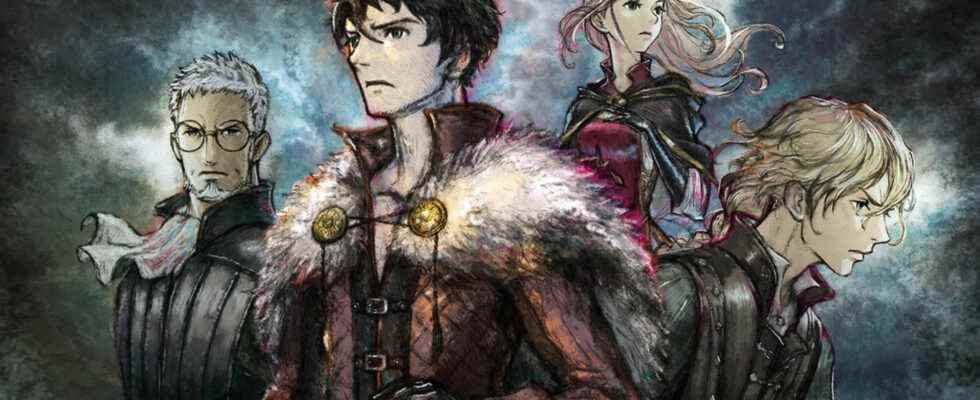In our Triangle Strategy review, we take a look at the overall dynamics of the game, which invites you to a dangerous world full of intrigue.
Triangle Strategy review : Triangle Strategy is a nice surprise for players who love the turn-based strategic role-playing games genre, which we have seen few examples. Aside from its name, which does not give much clue about the game at first glance, the game draws attention as it is made by Tomoya Asano, who has worked on games such as Bravely Default and Octopath Traveler before.
As a player who loves games like Final Fantasy Tactics and Jeanne d’Arc (it’s a great game) that debuted on PSP, I entered Triangle Strategy. I admit, I played a little late because of Elden Ring game. Let’s examine together how the game is, what type of players it appeals to and is it as good as we expected.
We enter a world full of intrigue with Triangle Strategy review
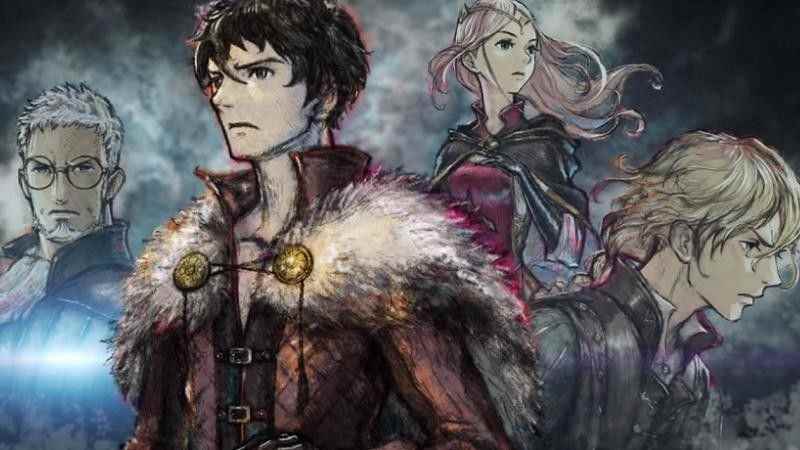
Story: For a Handful of Salt
Our story takes place in the continent of Norzella, where there are three different kingdoms. Fertile Glenbrook, strong with its agricultural activities, Aesfrost, known for its rich mineral resources, and Hyzante, which has full control over the continent’s most valuable resource, salt. Our story begins at a time when the tension between the three kingdoms, which had been at war for a long time, began to decrease.
The main character of our story, Serenoa, is the heir of the Wolffort family, one of the noble houses of the Kingdom of Glenbrook, and has an important place in peace studies. Serenoa is the chosen one to strengthen the work for peace by marrying the princess Frederica from the kingdom of Aesfrost. Shortly after the two met, the wars on the continent begin again with an unexpected attack and the subsequent invasion of Aesfrost.
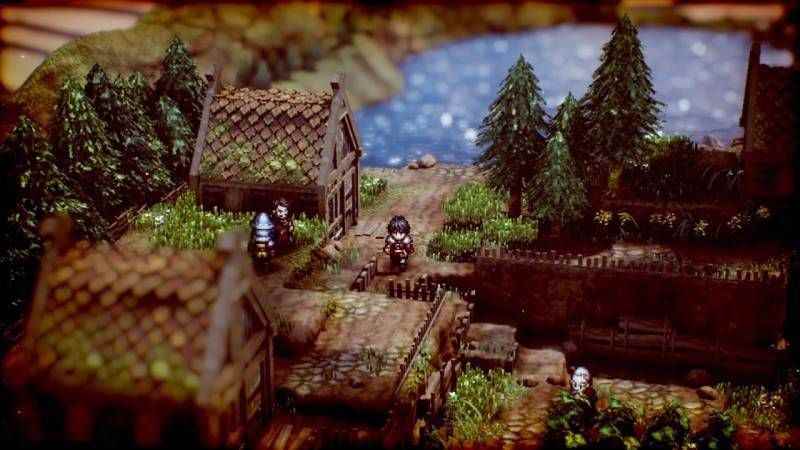
I likened the world of Triangle Strategy to the Game of Thrones series. A story set in a world of magic and supernatural powers, with political struggles and characters far from a sharp definition of good or bad. The world is beautifully and detailed, presented to the player with attention to details such as the unique cultures of different groups and their relations with others.
The story is quite detailed, it is possible to get more detailed information by talking to some side quests and other people in the region and play a role in shaping the story accordingly. Shaping the story with choices is not just a feature that changes the two dialogues, we see the short and long-term effects of every decision we make, and experience how it advances the story. I’ll write more details about the choices later in the review.
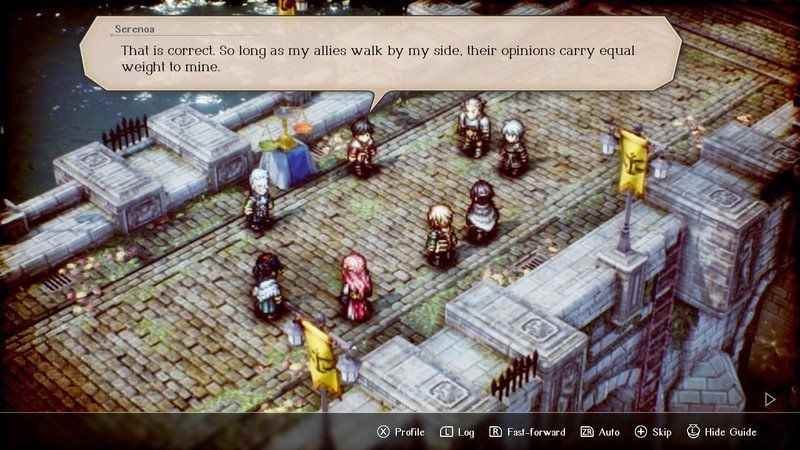
Triangle Strategy looks pretty good with the story that can be shaped according to our preferences and its successfully prepared world, but the storytelling part will not appeal to everyone. The opening hours of the game are quite heavy, there are a lot of side characters and we get the chance to get to know almost all of them in depth. Although it is a dialogue-heavy game, I cannot say that all the dialogues written are good. Some dialogues, especially during the opening hours, bored the player and said, “Let’s go to war!” he can think of.
We Go to War with the Army
We said Triangle Strategy is a turn-based tactical role-playing game. A large part of the game is spent watching the events taking place on the map of the continent and gathering information by talking to the people in the region. Since the continent is at war, we have our share of struggles. So, have the battles been fun? Dead!
In each episode, we get involved in various battles, some of which are story-dependent and some optional. Difficult battles between our team and the opponent take place on chessboard-style, squared maps. Each of the units in battle has its own characteristics and weak points. In addition, the heights of the map, the points where the units are placed and their distances from each other also have an important place. In addition, it is possible to take advantage by changing the condition of the ground where the units are located.
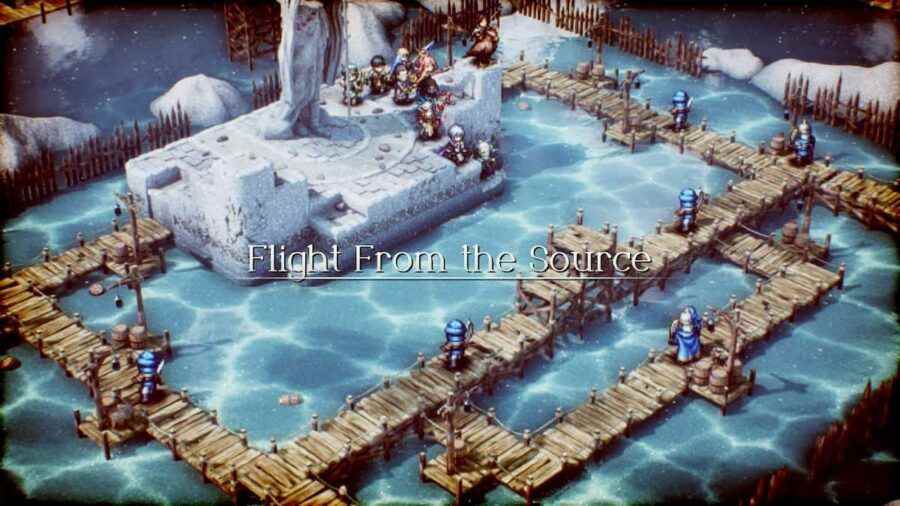
It is necessary to carefully select the units that will participate in the war, to place them well during the fight and to determine good tactics for the fight. Opponents also use the field advantages I mentioned above, and some characters have abilities to disrupt the opponent’s order. During the battles, you have to evaluate all the advantages you have and stop the opponent, sometimes you may have to sacrifice your teammates for this.
All of the characters we can add to our team have different classes, so you can set up your team according to your fighting style. In addition to the standard classes such as archers, mages, sword and shield masters, there are also more unusual professions. It is also possible to add characters with professions such as Wordsmith, who uses an interesting tactic of beating the enemies with their words and convincing them to withdraw from the war, and Artisan, who has features such as setting traps on the battlefield and opening stairs to reach high places.
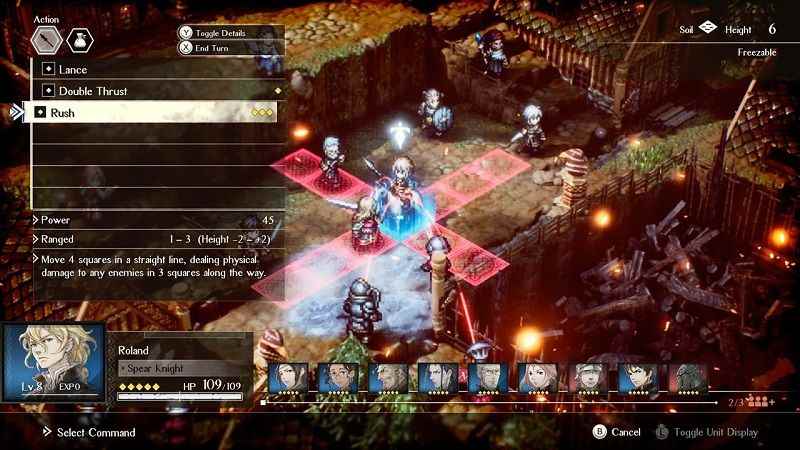
We can include about 30 different characters in our team in the game. Each of them joins our team as a result of different choices and it is not possible to collect all the characters at once. Apart from those who participate according to the degree of features such as Morality and Liberty possessed by Serenoa, there are also members who only come when we make certain decisions. Since the game has the New Game+ option, it is possible to make different decisions in the second game and bring all the members together.
We can go to the camp for options such as upgrading teammates’ equipment, promoting them after battles, purchasing items that will be needed in battles. Each character has its own class and we can’t change it, but thanks to the large cast, it’s not too disturbing. The strengthening of the bond between us and the characters we participate in the war together gives us an advantage in convincing them more easily during the choices we will make.

A World We Don’t Make The Decisions On Our Own
I just talked about convincing our teammates in the elections we will make, it’s time to talk about that. The choices in the game really affect the course of the story, and we can see the results both in our struggles and in the rest of the story.
The system called Scales of Conviction appears during the selections we will make and allows us to make a choice according to the general decision of the team. Serenoa has to make a joint decision with her most trusted assistants. We meet with our assistants for the critical choices we will make at some points and talk about what we should do. For example, we can surrender a noble to an opponent and fight against a smaller number of enemy forces, or we can refuse to back down to fight a strong army. Team members have different opinions in the decisions made for these choices and we need to convince them.
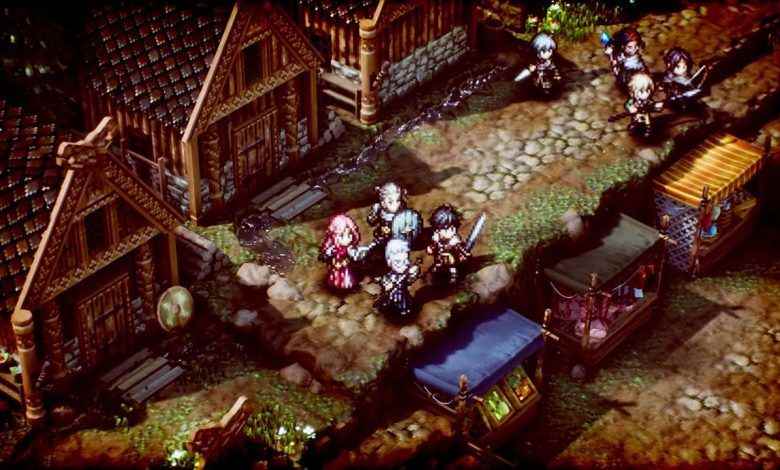
I said we decide, but Serenoa doesn’t have a vote of her own, her assistants make the actual decision, while Serenoa only has the chance to persuade them in the direction she chooses. For this, it is an advantage to have traveled around and talked to other people beforehand. In this way, you can inform your assistants and enable them to decide in the direction you prefer. In an episode like me, when you forget to talk to people and go to the decision-making stage, it is possible to watch helplessly as they make decisions contrary to what you want. “We got the game, the assistants are playing for us.” In this case, you can get angry.
To persuade a character, you must get to know him and present your opinion correctly. Not every character will like all the information, so you need to think carefully. I really liked that they applied the strategy part not only in the war, but also here. It is not possible to hit the table with all the new information you find and get the results you want.
Turn-based battles are already very enjoyable, and it would be nice to have a part about making the right choices by doing research to convince the assistants about the choices. Moreover, thanks to New Game+, we have the chance to come back and see different parts by choosing other options.
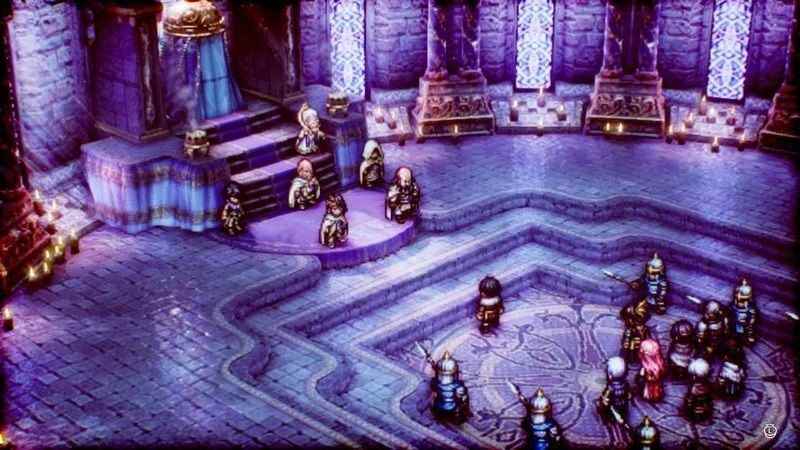
Conclusion
Triangle Strategy is not the kind of game we are used to. Even among tactical strategy role-playing games, it has become a game that stands out with its unique features. It looks good visually, most of the dialogue is voiced, the combat system is enjoyable, and it’s nice to see that you don’t have all the strings in your decision-making.
Speaking of good voice-overs, I have to mention that I played the game with Japanese voice-overs. Like most games, there is a sense of emptiness in English voice acting in this game. The characters are soulless, the voices mismatched and annoying. It’s also nice to have at least the chance to choose Japanese voiceovers.
There may not be many large battles, each of which is an enjoyable and special challenge. Although it is a dialogue-heavy game, the text writing can be below average in some places and sometimes too long to be tiring. Still, I enjoyed playing Triangle Strategy.
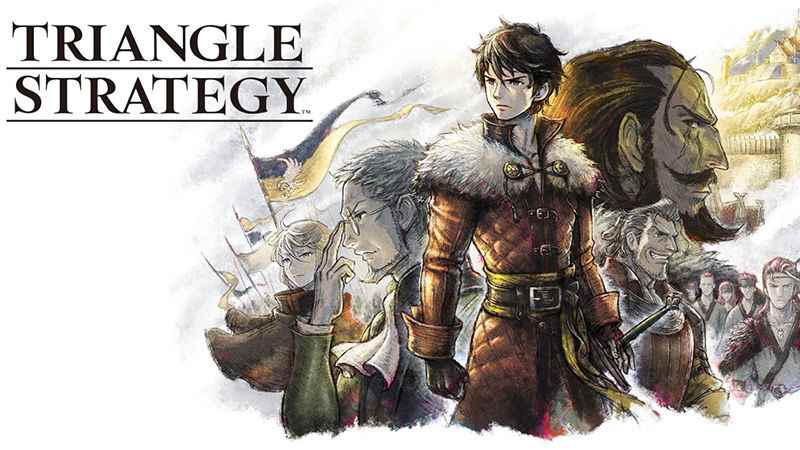
It was nice to see that many of the things that I found missing while playing Octopath Traveler are not in this game. I wish the characters were a little more customizable, but they managed to cover it up with numbers. If you are tired of the usual games, if you do not say no to reading a lot of texts and researching the environment, if you want a game where you can think about the wars and create strategy, I can easily recommend Triangle Strategy. It is a game that will take at least 40 hours and make you wonder what happened in the other elections.
Triangle Strategy, which has only been released for Nintendo Switch, is priced at $60 via Nintendo’s digital store. on sale case. Undoubtedly, it does more than justify its price tag in terms of content.
